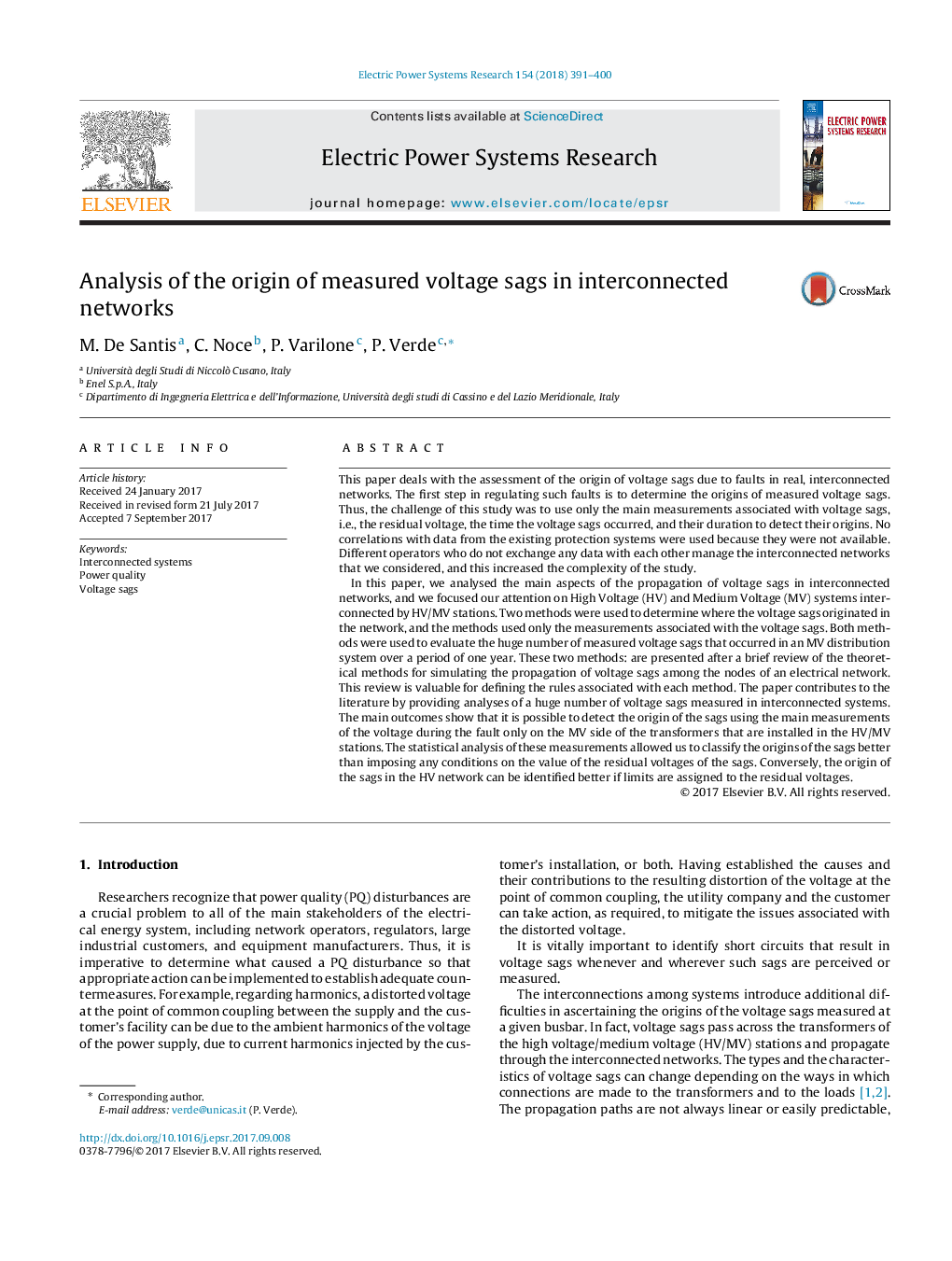| Article ID | Journal | Published Year | Pages | File Type |
|---|---|---|---|---|
| 5000908 | Electric Power Systems Research | 2018 | 10 Pages |
Abstract
In this paper, we analysed the main aspects of the propagation of voltage sags in interconnected networks, and we focused our attention on High Voltage (HV) and Medium Voltage (MV) systems interconnected by HV/MV stations. Two methods were used to determine where the voltage sags originated in the network, and the methods used only the measurements associated with the voltage sags. Both methods were used to evaluate the huge number of measured voltage sags that occurred in an MV distribution system over a period of one year. These two methods: are presented after a brief review of the theoretical methods for simulating the propagation of voltage sags among the nodes of an electrical network. This review is valuable for defining the rules associated with each method. The paper contributes to the literature by providing analyses of a huge number of voltage sags measured in interconnected systems. The main outcomes show that it is possible to detect the origin of the sags using the main measurements of the voltage during the fault only on the MV side of the transformers that are installed in the HV/MV stations. The statistical analysis of these measurements allowed us to classify the origins of the sags better than imposing any conditions on the value of the residual voltages of the sags. Conversely, the origin of the sags in the HV network can be identified better if limits are assigned to the residual voltages.
Related Topics
Physical Sciences and Engineering
Energy
Energy Engineering and Power Technology
Authors
M. De Santis, C. Noce, P. Varilone, P. Verde,
